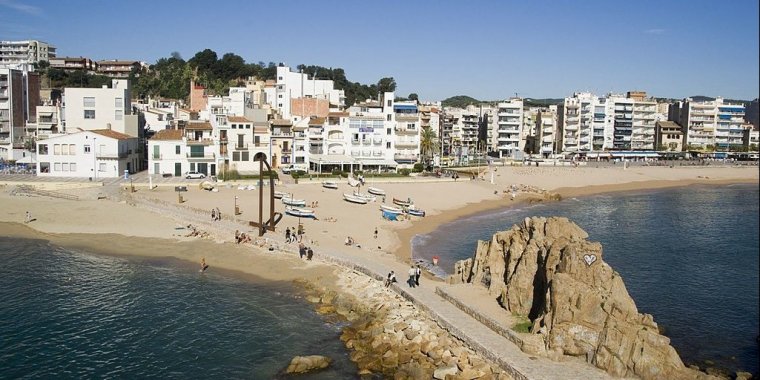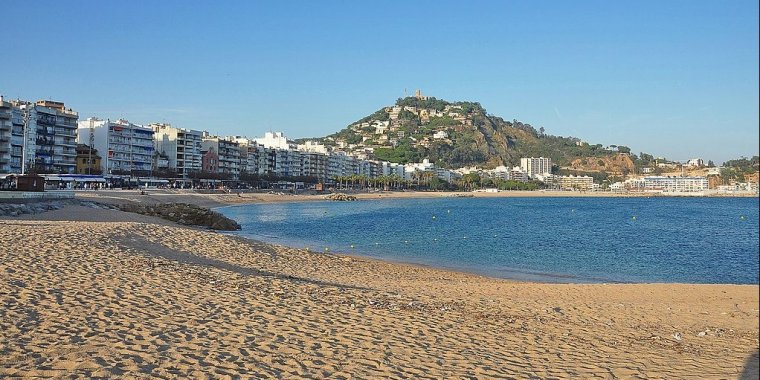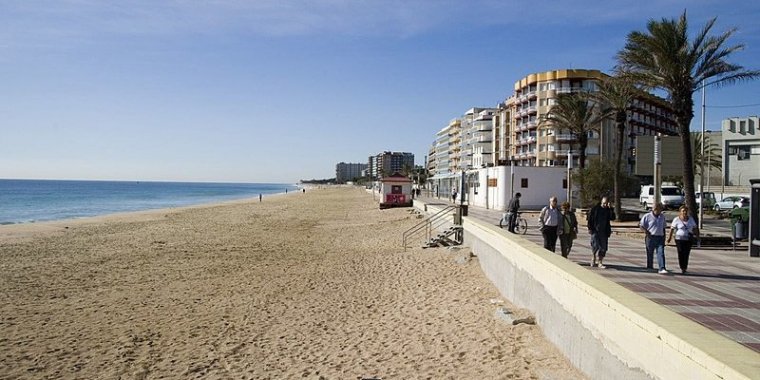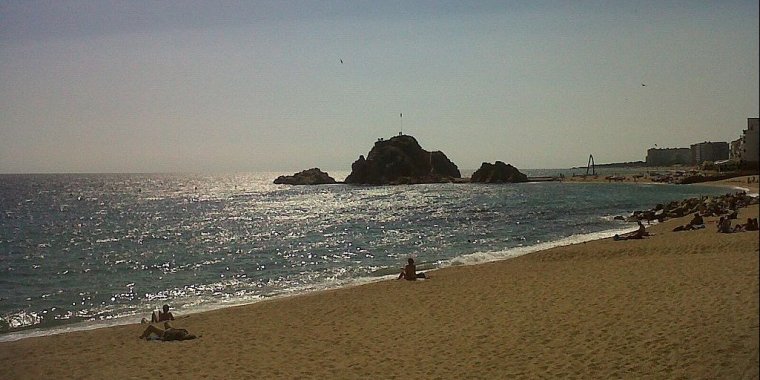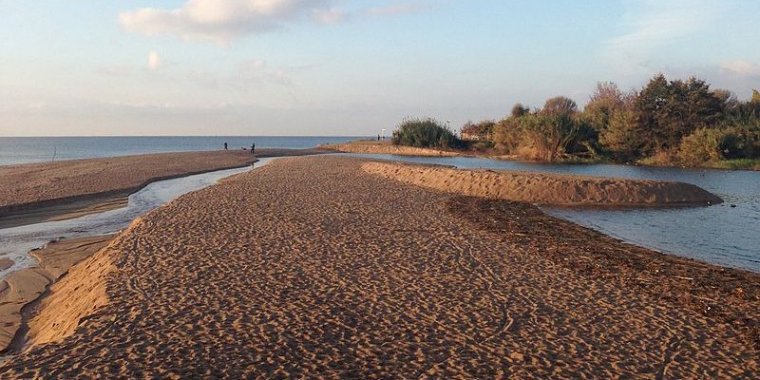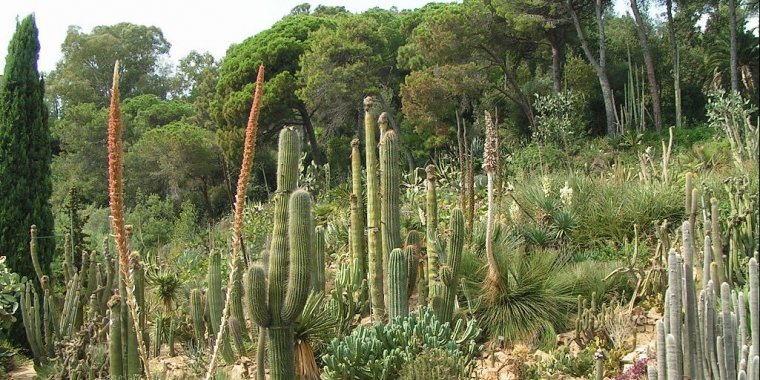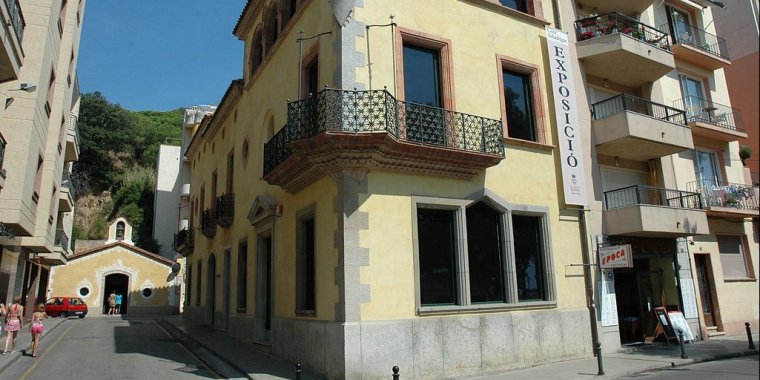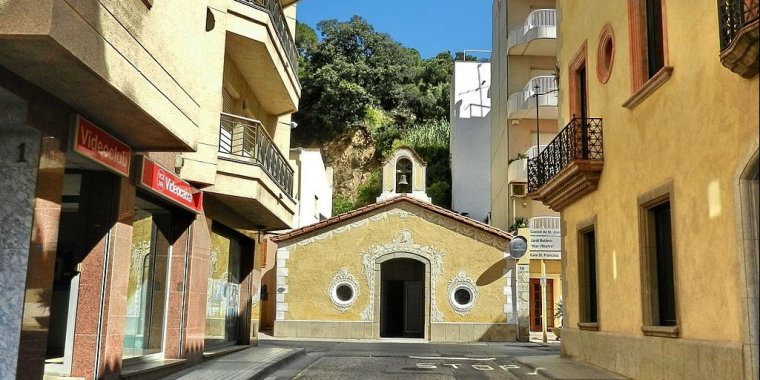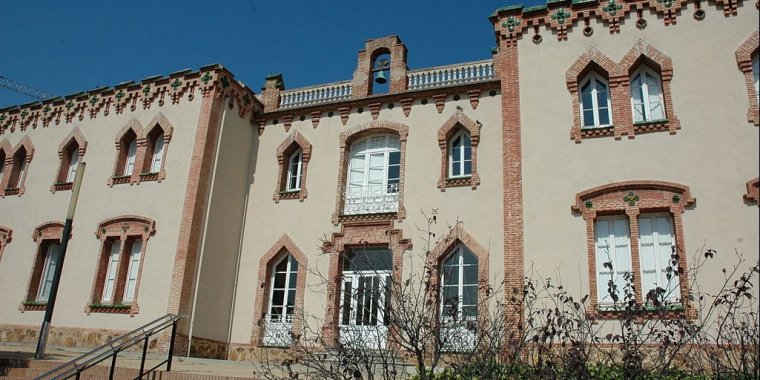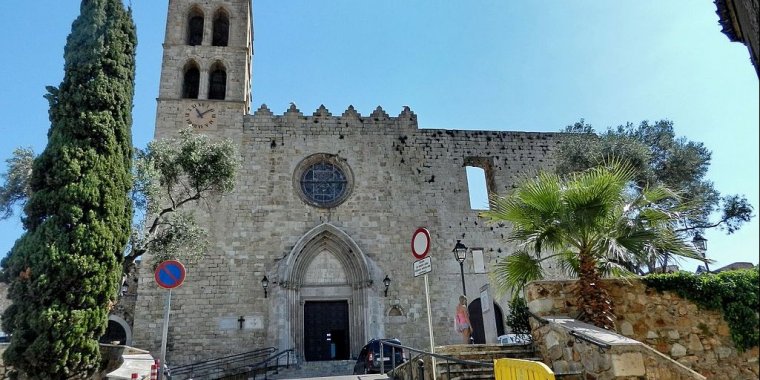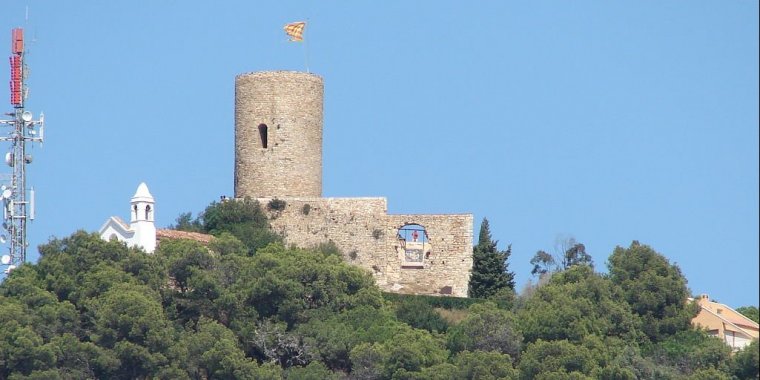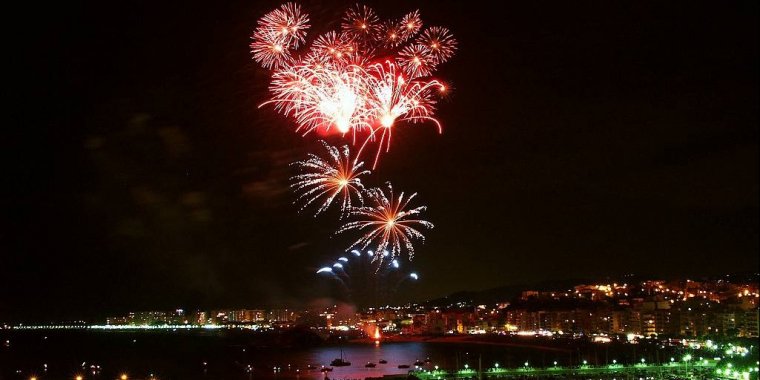| Published in Attractions / Places of Interest |
Tourist Attractions in Blanes, Spain
Blanes is a town and municipality in the comarca of Selva in Girona, Catalonia, Spain. It is known as the "Gateway to the Costa Brava". Its coast is part of the Costa Brava, which stretches from Blanes up to the French border. Blanes is a popular tourist town, and it is known for the Concurs de Focs d'Artifici during the Santa Anna festival; this event includes a lot of fireworks. Other places of interest include a botanical gardens, coves, such as the Cala Bona, and beaches which are surrounded by mountains.
The main natural attraction in Blanes is the coastline. Visitor will find 2 very different coastlines as Blanes is located on the border between two different coasts (the Costa Brava and the Costa del Maresme ). North of the port, the Costa Brava's typical small pebbled caves surrounded by mountains. And long granulated-sand beaches on the south.
• Blanes Beach (Platja de Blanes), Pau Casals Ave (In the center of the town between the port and the Sa Palomera rock). The main beach of Blanes is the nearest to the city center, this is a 2000 feet long granule sand beach. Facilities include toilets, showers, SOS, kids area, volley-ball fields, ferry station and wheelchair access. Restaurants, bars, shops... are in the city next to the beach. Over the years the beach has been shortened by consecutive port expansions. In 2011 in the last port expansion the beach was lengthened in a 90 degree turn along the dock to the harbor's entrance. Free.
• S'Abanell Beach (Platja de S'Abanell), S'Abanell Ave (South of Sa Palomera rock). With a length of 1.5 miles this is Blanes longest beach. It's sand is grain sized except from some fine sand areas because of land fillings. Facilities include toilets, showers, SOS, sun-loungers, parking, wheelchair access and ferry station. Restaurants, bars, shops... are in the city next to the beach. Free.
• Sa Forcanera cove (Cala Sa Forcanera) (Not accessible by land). A gorgeous forgotten cave with no facilities 1km away from the city center. Can be seen from the Marimurtra botanical garden. Consists of leucogranitic cliffs and a small beach with big pebbles. Ancient remains of a dock, some facilities and the stairs of the inaccessible path to Blanes are next to the beach. Get there by kayaking or by a long swim and rock walking from Santa Anna. Free.
• S'Aguia cove (Cala S'Aguia) (By a 20 min. trail at the left of the pinya de Rosa botanical garden entrance). Small cave with no facilities in the border between Blanes and Lloret del Mar. From the south of the beach, sanded by 1 meter diameter rocks you can see the S'Aguia rock, the last rock you will see north of the beach. On the beginning of the trail is a green gate. Pass through the side of the gate only by foot. People visiting the beach usually park in the garden's parking lot. According to a sign, payment may be required, but it usually is not. Free.
• Santa Anna Rock (Punta Santa Anna) (Behind the Blanes port. Is 15 minutes by walking from the center). A cove with no facilities and a small beach between the granitic cliffs of El Convent and the dock of the port. The beach's consists on pebbles near the water and grain sand next to the walls. Some basaltic columns with olivine and augite bombs are present. Perfect for rock-hunting, snorkeling and scuba diving. Bars and restaurants are in the port area near the cove. Free.
• Sant Francesc cove (Cala Bona/Cala Sant Francesc). A scenic and ideal for families cove surrounded by pines. Accessible by a 1 hour walk from the city and by bus. The parking near the beach is subject to payment at high season. Facilities include toilets, showers, SOS, parking and ferry station. There is only a restaurant near the beach. Take the stairs from the beach to the viewpoint and Sant Francesc chapel or rent a paddle boat to explore around the cliffs. Free.
• Sa Palomera. This is a big rock which divides the city bay by the half. This considered is the beginning of the Costa Brava. There are stairs from the beach to the viewpoint at the top of the rock. Free.
• Tordera Delta (Situated at the end of the beach opposite to the port. Walk to the end of the promenade and continue to the river through the beach or use the road 100 meters away from the beach). There is a grained sand beach which is the only where nudism is accepted in Blanes. Free.
At the Tordera river's delta there have been located 40 exotic and 284 native bird spices like: Little Ringed Plover (Charadrius dubius), Kentish Plover (Charadrius alexandrinus), Ruff (Philomachus pugnax), Redshank (Tringa totanus), Northern Pintail (Anas acuta) and Little Grebe (Tachybaptus ruficollis). There are bird observation decks at the south riverside.
The beach on this delta is the best known spot in Costa Brava to see blue sharks (Prionace glauca), ocean sunfishes (Mola mola) and dolphins (Delphinus delphis).
Botanical Gardens
Blanes have two world recognized botanical gardens both with scenic views of the Costa Brava's coves.
• Marimurtra (In the mountain between Castell de Sant Joan and Punta de Santa Anna). 16 hectares, considered the best Mediterranean botanical garden in Europe. €6, discounts for students.
• Pinya de Rosa (On the way from Cala Sant Francesc and LLoret de Mar's Cala Santa Anna). 500 hectares garden containing the considered best collections of aloe, agave and cactus in the world. €4, €3 for students.
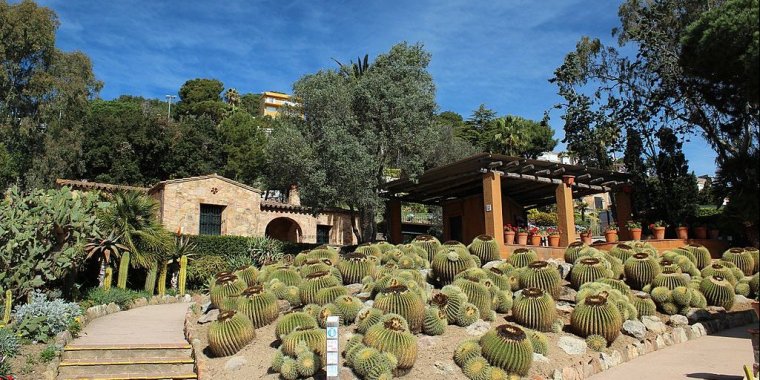
Jardí Botànic Tropical Pinya de Rosa. ![]()
Historical Buildings
• Cabrera's Palace (Palau vescomtal de Blanes), Església Sq (The door at the right of the Santa Maria's Church main door). 19th-century gothic architecture palace placed on the top of the old village. It was partially destroyed under the Catalan Revolt and the following wars against France.
• Saladrigas House (Casa Saladrigas), 48, Esperança St (Near the port next to Telepizza at the main avenue). Catalan Noucentsime house built between 1918 and 1920 by the architect Isidre Puig i Boada. Notice the wrought iron works in the balcony.
• Can Tordera, Passeig de Dintre street, 26 (near the city hall and the Plaza España). Catalan Modernist house.
• Esperanza's Chapel (Behind the Casa Saladrigas at the port area). This small chapel was built outside the city walls. It's first referenced in 1650. Take a look at the scale model ships inside the chapel.
• Gothic Fountain (Font gòtica), Ample Street (150 m away from the Passeig Cortils i Vieta). This 15th-century Gothic water fountain was 1438 to supply drinking water to Blanes city in response to pandemics. Since the 2006 conservation works there is no water supply. Free.
• Hospital Asil de Sant Jaume, Jaume Arcelos Street, 1. Catalan Modernist hospital.
• Santa Maria's Church, Església Sq (on a hill in the old town at the center of the city). Gothic church that was built from 1350 to 1410. It was burnt down ( except for the wall ) in 1936, loosing one of the best preserved gothic church of the area and two Antoni Gaudi thrones. It was reconstructed on 1944.
• Sant Joan Castle (at the top of the mountain with the same name, just beside the port). This 18th-century castle offers the best views of the city. It was built to defend the city against pirates and the used to defend Barcelona from attacks from the north. Accessible by car or by foot by a long stairs. Take a photo of the city and beach through the cannonball-made hole on the wall. Free.
Diving the Costa Brava
It is possible to dive at the coves of Santa Anna and Cala Sant Francesc or from a boat. Find sea anemones (Actinia equina), sea horses (Hippocampus guttulatus), sponges (Petrosia ficiformis, Myxilla incrustans), spirographs (Spirographis spaññanzanii), octopus (Octopus vulgaris), starfish (Ophidiaster ophidianus), sea cucumbers (Holothuria forskali) and many sea urchins (Spaerechinus granularis, Paracentrotus lividus).
Festivals
• The Festa Major or feast of Santa Anna and Sant Joaquim (on the 26th) are usually celebrated in the 3rd or 4th week of July, between the 21st and 27th annually. During the eight days, the major feasts are celebrated as well as the Fireworks Contest which attracts more than 500,000 visitors. This is an international competition in which various countries from around the world participate. Over 500,000 kg of fireworks are used at each event. Most people watch the fireworks from the beach.
• The Festa Major Petita or the feast of the co-patrons (Sant Bonòs and Maximià). A family-oriented trek is celebrated where many people walk accompanied by their children, pets. It is approximately 8 km long. The reward is a memento and a slice of watermelon. (Wikivoyage)
See also Blanes in Pictures.
YOU MAY ALSO LIKE






 If you own or manage a travel-related business such as a hotel, a bed-and-breakfast, a restaurant, a pub or a cafeteria, you can create a web page for your business for free on Titi Tudorancea Travel Info. » |
